The name ‘Oriental jewellery’ refers to a vast geographical area, where jewellery and ornamental traditions are as diverse as the cultures themselves. The choice between gold and silver depends on traditions and cultures, but also on the metals available locally and the wealth of the owners.
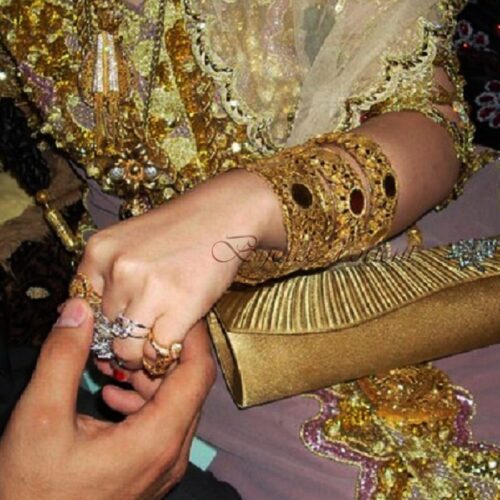
Women’s jewellery and men’s jewellery are not always made from the same metal. In the Maghreb and Middle East, Jews, Muslims, Catholics and Orthodox coexist (roughly speaking). For Muslims, a man must not wear gold, whereas this is not a problem for the other religions. Even if they all recommend dressing modestly and not showing off too much, a precept that has often been forgotten!
So, if we focus on women’s jewellery, gold and silver are used. To a lesser extent, vermeil, which is silver covered in gold, is also used. And there are many pieces of jewellery combining gold and silver, known as “Moon and Sun” [Shems Oul Kmar] (and guess what: the Moon symbolises silver, and gold the Sun). Traditionally more Moroccan, and even from the north of Morocco, they have gradually spread throughout North Africa.
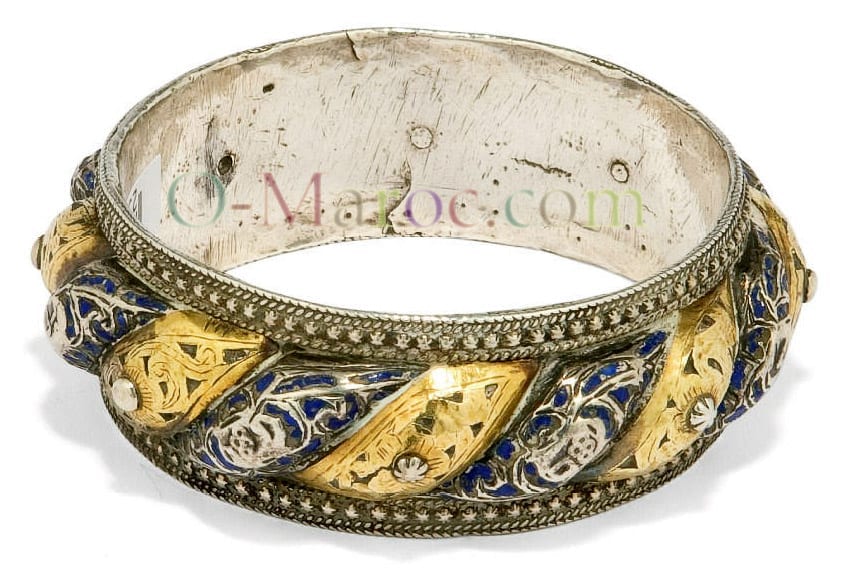
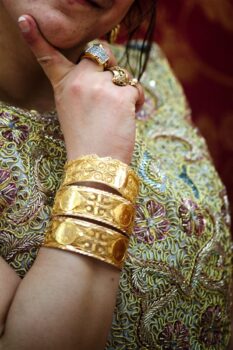
The bride’s finery will be made of gold, or will look like it if her family is not wealthy enough. In Morocco, a high, articulated belt, a tiara-shaped diadem for the most modern, a headdress with a pendeloque for the traditional ones, fibulas, a ring, and the seven gold bracelets of the dowry (the famous msib3a, whose name means “the pair of seven”), or, in Algeria, a large bracelet adorned with gold louis, called the Makyess.
The photo opposite clearly shows the filigree work that forms the basis of the bracelets. This is one of the traditional motifs of Arab jewellery, found on both gold and silver jewellery.
Greek jewellery is the heir to a thousand-year-old tradition, first revisited to create Byzantine jewellery, and then influenced by Turkish culture. Greek jewellery has been made of gold since Antiquity – just think of Sophie Schliemmann wearing the jewels of Helen of Troy. The photos of the time were in black and white, but the jewellery can still be seen, now in the Pushkin Museum in Moscow.
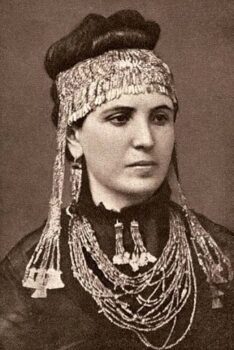
It consists of two tiaras (here Sophie Schliemann is wearing the larger tiara, which is also shown in this photo taken at the Pushkin Museum), two earrings, two types of fibula and a huge necklace.
The Greeks loved gold… and so did the Byzantines. The further east you go, to the distant East, to Russia (which used to be called Rus), the more gold you load up on and the more you forget about silver.
Conversely, Turkey, which is to the east but lies between Europe and Asia, is very fond of silver. Modern jewellers are producing some very fine pieces inspired by ancient times, the beauty of which comes mainly from the nielloed arabesques, with a look that is both refined and almost brutal.
So gold jewellery or silver jewellery? First and foremost, it’s better to have a beautiful piece of silver jewellery than a poorly made, crude piece of gold, a beautiful piece of silver jewellery than a brass bracelet that claims to be made of gold. But for the Moroccan bride, it’s better to have plenty of gold, even if the jewellery has to be rented from the Negafa, or if it’s just a light plating.
 A typo or syntax error? You can select the text and hit Ctrl+Enter to send us a message. Thank you! If this post interested you, maybe you can also leave a comment. We'd love to exchange with you !
A typo or syntax error? You can select the text and hit Ctrl+Enter to send us a message. Thank you! If this post interested you, maybe you can also leave a comment. We'd love to exchange with you !

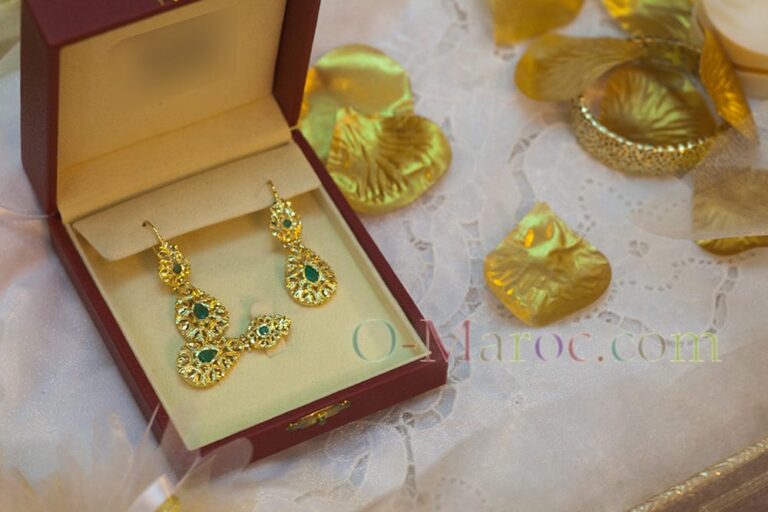



1 Comment
This blog offers a captivating exploration of Moroccan gold and silver jewelry, highlighting its deep cultural significance and exquisite craftsmanship. It delves into traditional Berber designs, such as the khmissa (hand of Fatima), and the use of silver adorned with enamel, coral, and amber. The article also touches upon the historical role of Jewish silversmiths in towns like Tiznit, showcasing the rich tapestry of influences that have shaped Moroccan jewelry. A fascinating read for anyone interested in the intersection of art, culture, and history.